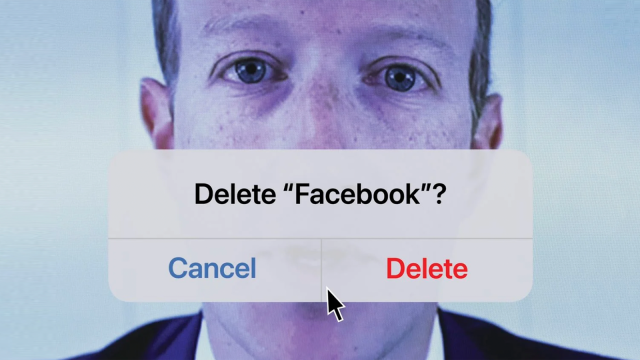How many innocent people is the plea bargain sending to prison?

- Plea bargaining has displaced the American trial as the main mechanism for resolving criminal charges. Approximately 95 percent of criminal cases are resolved through plea bargaining.
- A case of a 1999 robbery illustrates why. There were significant reasons to doubt the guilt of the accused, and those reasons came to light during his trial.
- Yet in the end, the jury found Stephen Schulz guilty. His sentence was nearly four times what he would have received in a plea bargain, which he later wrote he should have accepted.
Excerpted from Barred: Why the Innocent Can’t Get Out of Prison by Daniel Medwed. Copyright © 2022. Available from Basic Books, an imprint of Hachette Book Group, Inc.
There are just enough high-profile criminal trials to give the impression that heated courtroom battles over guilt or innocence are the norm. That defendants routinely exercise their constitutional right to a trial by jury, allowing the adversary system and regular citizens to decide their future. Think O. J. Simpson. Dzhokhar Tsarnaev. Derek Chauvin. In truth, the criminal trial is a vanishing species, a casualty of the steady rise of plea bargaining.
It’s understandable why plea bargaining has displaced the American trial as the main mechanism for resolving criminal charges. Guilty pleas streamline the litigation process and suit the needs of prosecutors obsessed with conviction rates, overworked defense attorneys, risk-averse defendants, and neglectful judges tasked with managing jam-packed dockets. Defense lawyers and prosecutors tend to negotiate pleas quickly, in courthouse vestibules and local watering holes, lives and liberty bartered away by harried attorneys speaking in hushed tones. Prosecutors often demand that to get a plea bargain, defendants must not only forsake their right to trial, but also waive their right to challenge any underlying legal issues in their case later on in an appellate tribunal.
The defendant then appears in court to ratify the deal. At that hearing, the defendant admits guilt, briefly testifies about the facts of crime, and claims he knows what he’s doing in entering the agreement and giving up his rights. A judge accepts the guilty plea and imposes the negotiated sentence, which is typically a fraction of the maximum sentence facing the defendant if the case went to trial.
Justice signed, sealed, and delivered in a matter of minutes.
At first blush, plea bargains seem like a win- win for all key players. A prosecutor can secure a conviction without the time, expense, and risk of a full- blown trial, and spare crime victims the agony of testifying. A defendant can lock in a sentence that’s preferable to what he’d likely receive after being found guilty at trial. A defense lawyer can cut her caseload while feeling that she benefitted her client. Judges profit from this arrangement too, as they barely inspect pleas before approving them. This keeps the wheels of “justice” spinning without getting mired in lengthy proceedings, much less risking reversal on appeal.
The upshot of these incentives? Approximately 95 percent of criminal cases are resolved through plea bargaining, a percentage that’s gone up since the “tough-on-crime” era of the 1980s. The criminal trial is not just endangered. It’s practically extinct. But the purported advantages of plea bargains wither on closer examination, especially for the innocent. Prosecutors, not judges and juries, dictate the outcomes of cases by crafting plea offers on their own that effectively determine defendants’ fates. This creates a terrible quandary for defendants. Take the deal and sacrifice your right to a trial, or roll the dice and potentially receive a much stiffer punishment. What’s gained in this process is efficiency and finality. What’s lost is a public reckoning and a thorough accounting of the facts in an open forum. And what’s unknown is whether the defendant is actually guilty.
Defendants who proceed to trial after shunning a generous plea offer often do so at their peril. Indeed, exercising the right to a jury trial is poor consolation to someone later socked with a sentence many multiples of the one contained in the plea offer. This is troublesome enough for any defendant. But what if you’re innocent? And what if your innocence claim is hard to prove?
Maybe you have a shaky alibi, or the major eyewitness against you is a prominent member of your community and likely to be believed. Do you turn down an offer of a light sentence in exchange for just saying you did it? Or do you stick to your guns, head to trial, and run the risk of a much harsher punishment if you lose?
One of my former clients experienced this dilemma.
At 8:20 p.m. on February 3, 1999, a large white man entered El Classico Restaurant in Brentwood, New York, on Long Island. The place was desolate, with only a cook and a waitress inside. The man ordered a shrimp dinner. While the cook prepared it in the kitchen, the man withdrew a knife, put it to the waitress’s throat, and demanded she open the cash register. She obeyed. Thirty- two dollars and change. That’s all that was in the till. He grabbed the money; she screamed. The cook rushed out, catching a glimpse of the perpetrator as he fled in a white, late model car with a “T” and a “1” in the license plate.
The police arrived. They showed the cook and the witness a “six- pack”— a photo lineup of six men who matched the initial description of the robber. All of them were heavyset, white, and thirty-something. The two eyewitnesses looked at the lineup and separately identified Stephen Schulz as the perpetrator. He fit the bill in two key respects. First, he was six feet two, 250 pounds, and in his mid- thirties. Second, he had a criminal record. But nothing in his past indicated a proclivity for violence or the use of a weapon.
The police confronted Schulz. He said that he was home with his roommate watching television at the time of the incident. Unmoved, the police arrested him, and prosecutors later filed robbery charges. As he was too poor to pay for an attorney, the court assigned a lawyer to represent him.
Schulz languished in county jail for several months awaiting trial. During his stint in lockup, he came across an article in the local paper that caught his eye. A man named Anthony Guilfoyle had just pled guilty to six storefront robberies in the Brentwood vicinity that had occurred between January and March 1999, bookending the El Classico theft. Guilfoyle had used his bulk— he was six feet four and weighed more than three hundred pounds—to intimidate employees into handing over money. A mugshot accompanied the story. Puffy cheeks, thick neck, messy hair. He looked a lot like Stephen Schulz.
Schulz’s sister called his lawyer. She yelled about Guilfoyle and begged for an investigation. The lawyer didn’t comply. Instead, he basically cautioned, Let’s see how the case plays out.
Well, here’s how it played out. The prosecution offered Schulz a deal to plead guilty and get three years in prison. It was an attractive proposal considering the severity of the crime and the length of Schulz’s record. He was facing much worse if he lost at trial: a decade or more behind bars. The situation put Schulz in a bind. On the one hand, the case had holes, and proving guilt beyond a reasonable doubt might be tough for the government. That’s one explanation for the generosity of the plea offer; prosecutors didn’t want to “lose” at trial. On the other hand, there’s no sure thing in trial practice. Did Schulz want to wager years of his life by going to trial to prove his innocence?
He did.
At Schulz’s trial, the prosecution relied on testimony from the cook and the waitress. The cook insisted the man sitting at the defense table was the person who robbed El Classico. What came out, though, was that the cook had a criminal weapon possession charge that had gone away during the gap between the robbery and the trial. The defense failed to establish that the cook’s testimony was a quid pro quo — a promise to testify against Schulz in return for dismissal of the gun case — but it became clear there was reason to doubt the cook’s veracity.
An even more remarkable thing happened when the waitress took the stand. The government asked if the man who had robbed her was present in the courtroom. We’ve watched this scene countless times onscreen. In the cinematic version, the victim either points a wobbly finger at the defendant and collapses into tears, or boldly brands the defendant her assailant. But here the witness paused and said no. Now that she saw him in the flesh, as opposed to in a picture, she realized Schulz wasn’t the guy. The robber was taller and heavier .
Schulz’s defense lawyer had a tactical choice to make. He could display Guilfoyle’s photo to the waitress on cross-examination. Yet he hadn’t interviewed her beforehand and didn’t know what she might say. If she identified Guilfoyle, bravo. If she didn’t, then that line of questioning would undercut the strength of her astonishing refusal to identify Schulz in court. An old adage of trial work is that you should never ask a question on cross if you don’t know the answer. So the lawyer went for a middle-of-the- road strategy, somewhere between showing her the picture and bypassing the topic altogether. He tried to get Guilfoyle’s photo admitted into evidence to allow the jury to see on its own how he resembled Schulz. It was a bid to create reasonable doubt, pure and simple. The judge didn’t let the photo in, however, because he didn’t detect a “sufficient nexus” between Guilfoyle and the El Classico robbery to justify admission.
Without either testimony from the waitress about Guilfoyle or admission of the photo into evidence, the jurors had only an inkling of a possible other culprit. And that inkling didn’t do the trick for Schulz. The jury found him guilty of robbery. The judge later sentenced him to eleven years in prison, nearly four times the plea offer.
After Schulz landed at a state correctional facility, he wrote to the Second Look Program at Brooklyn Law School. I was running the day-to-day operations of the clinic at the time and reviewed his letter. Among the first things our new client told me: I wish I’d taken the plea.





